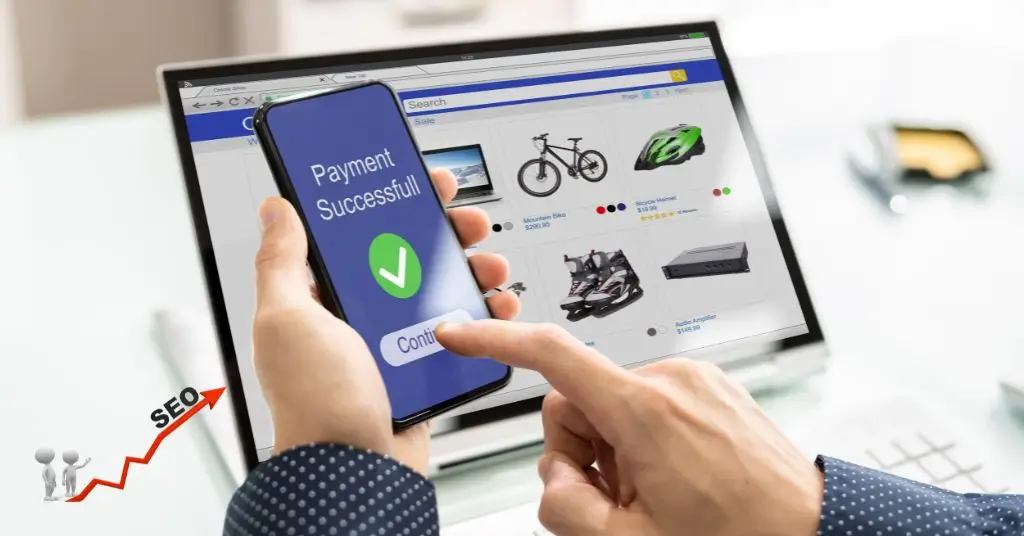
E-commerce SEO, or Search Engine Optimization, is the practice of optimizing an online store to rank higher in search engine results pages (SERPs). This process involves a variety of strategies and techniques designed to attract more organic traffic, ultimately leading to increased sales. Effective e-commerce SEO can be the difference between a bustling online store and one that struggles to gain traction. In this guide, we’ll delve into everything you need to know about e-commerce SEO, from keyword research to the latest trends, ensuring your online store reaches its full potential.
Understanding E-commerce SEO
E-commerce SEO is a specialized branch of SEO focused on improving the visibility of online stores. Unlike traditional SEO, which might focus on blog posts or informational content, e-commerce SEO centers around product pages and categories. The goal is to make your products easy to find when potential customers search for them on Google and other search engines.
Key components of e-commerce SEO include:
- Keyword Research: Identifying the terms potential customers use to find products.
- On-Page SEO: Optimizing individual product pages.
- Technical SEO: Ensuring the website is structured and performs well.
- Content Marketing: Creating valuable content to attract and engage customers.
- Link Building: Acquiring high-quality backlinks to improve domain authority.
Keyword Research for E-commerce

Why Keyword Research is Important
Keyword research is the foundation of any successful SEO strategy. It helps you understand what potential customers are searching for, allowing you to tailor your content and product pages to meet their needs. By targeting the right keywords, you increase your chances of appearing in search results when customers are ready to buy.
Tools for Keyword Research
Several tools can assist you in finding the right keywords for your e-commerce site:
- Google Keyword Planner: Offers keyword ideas and traffic estimates.
- Ahrefs: Provides comprehensive keyword data and competitor analysis.
- SEMrush: Helps identify keywords your competitors are ranking for.
- Ubersuggest: A user-friendly tool for keyword suggestions and metrics.
Identifying High-Intent Keywords
High-intent keywords are those that indicate a strong likelihood of purchase. For example, “buy running shoes online” is a high-intent keyword compared to “running shoes.” When choosing keywords, prioritize those that show purchase intent to attract ready-to-buy customers.
Long-Tail vs. Short-Tail Keywords
- Short-Tail Keywords: Broad terms with high search volume but also high competition (e.g., “shoes”).
- Long-Tail Keywords: More specific phrases with lower search volume but less competition (e.g., “women’s running shoes size 7”).
Long-tail keywords often convert better because they match specific search intents.
On-Page SEO for E-commerce Sites
Optimizing Product Pages
Your product pages are critical for e-commerce SEO. Here’s how to optimize them:
- Title Tags: Use clear and descriptive titles that include your primary keyword (e.g., “Men’s Leather Jacket”).
- Meta Descriptions: Write concise summaries that include relevant keywords and a call to action (e.g., “Buy the best men’s leather jacket today!”).
- Header Tags (H1, H2, etc.): Use headers to organize your content and include keywords where appropriate.
Crafting Unique Product Descriptions
Unique product descriptions are essential. Avoid using manufacturer descriptions, as they are often duplicated across multiple sites. Instead, write detailed and engaging descriptions that highlight the product’s features, benefits, and uses, naturally incorporating relevant keywords.
URL Structure
SEO-friendly URLs are short, descriptive, and include keywords. For example, “yourstore.com/mens-leather-jacket” is better than “yourstore.com/product12345.”
Image Optimization
Optimize images by using high-quality visuals with descriptive file names (e.g., “mens-leather-jacket.jpg”) and adding alt text that describes the image content. This helps search engines understand your images and improves accessibility.
Internal Linking
Internal links connect different pages on your site, helping users navigate and discover more products. Link to related products, categories, and informative content to keep visitors engaged and improve your site’s SEO.
Technical SEO for E-commerce
Site Speed and Performance
A fast website enhances user experience and boosts SEO. Use tools like Google PageSpeed Insights to identify and fix performance issues. Common improvements include optimizing images, leveraging browser caching, and minimizing JavaScript.
Mobile Optimization
With the rise of mobile shopping, ensuring your site is mobile-friendly is crucial. Use responsive design to provide a seamless experience across all devices. Google’s Mobile-Friendly Test tool can help you check your site’s performance on mobile devices.
HTTPS and Site Security
Using HTTPS is essential for securing your site and protecting customer data. It also boosts your SEO, as Google prefers secure sites. Ensure your site has a valid SSL certificate.
XML Sitemaps and Robots.txt
An XML sitemap helps search engines find and index your pages. Create and submit a sitemap through Google Search Console. The robots.txt file guides search engine crawlers on which pages to crawl and index, preventing them from accessing certain parts of your site.
Structured Data (Schema Markup)
Structured data helps search engines understand your content better. Use schema markup to provide detailed information about your products, such as prices, availability, and reviews. This can enhance your search listings with rich snippets, making them more attractive to users.
Content Marketing for E-commerce SEO
Developing a Blog Content Strategy
A blog can attract traffic, build brand authority, and engage customers. Write posts related to your products, industry trends, and customer interests. For example, if you sell fitness equipment, create content about workout tips, exercise routines, and health advice.
Leveraging User-Generated Content
Encourage customers to leave reviews and testimonials. User-generated content adds credibility and can boost your SEO. Displaying customer reviews on product pages can also enhance trust and influence purchasing decisions.
Utilizing Video Content
Videos are highly engaging and can boost SEO. Create product videos, tutorials, and unboxing videos to showcase your products and provide valuable information. Hosting videos on YouTube can also drive traffic to your site.
Link-Building Strategies for E-commerce
The Importance of Backlinks
Backlinks from reputable sites signal to search engines that your site is trustworthy. High-quality backlinks can improve your domain authority and search rankings. Focus on acquiring links from industry-related blogs, news sites, and influencers.
Strategies to Acquire High-Quality Backlinks
- Guest Blogging: Write articles for other blogs in your industry. Include a link back to your site.
- Influencer Partnerships: Collaborate with influencers to review and promote your products.
- Broken Link Building: Find broken links on relevant websites and suggest your content as a replacement.
- Resource Page Link Building: Identify resource pages in your niche and request to have your content included.
User Experience (UX) and SEO
The Relationship Between UX and SEO
A good user experience keeps visitors on your site longer, reducing bounce rates and improving SEO. Search engines prioritize sites that provide a positive user experience.
Enhancing Site Navigation
Clear and intuitive navigation helps users find what they’re looking for. Use descriptive menu labels, a prominent search bar, and organized categories to improve site navigation.
Simplifying the Checkout Process
A complicated checkout process can lead to cart abandonment. Streamline your checkout process by minimizing the number of steps, offering guest checkout, and ensuring the process is mobile-friendly.
Reducing Bounce Rates
Reduce bounce rates by ensuring your site loads quickly, is easy to navigate, and provides valuable content. Engage visitors with relevant products, informative articles, and interactive elements.
Measuring and Analyzing SEO Performance
Tools for Tracking SEO Performance
Several tools can help you monitor your SEO performance:
- Google Analytics: Tracks website traffic, user behavior, and conversions.
- Google Search Console: Provides insights into how your site appears in search results and identifies issues.
- Ahrefs/SEMrush: Offer comprehensive SEO analysis and competitor insights.
Important Metrics to Monitor
- Organic Traffic: The number of visitors coming from search engines.
- Bounce Rate: The percentage of visitors who leave your site after viewing only one page.
- Conversion Rate: The percentage of visitors who make a purchase.
- Average Session Duration: How long visitors stay on your site.
- Pages per Session: The average number of pages viewed per visit.
Adjusting Strategies Based on Data Analysis
Regularly review your data to see what’s working and what isn’t. For example, if certain product pages have high bounce rates, consider revising the content or improving the page’s layout. Use A/B testing to compare different strategies and make data-driven decisions.
Common E-commerce SEO Mistakes to Avoid
Duplicate Content Issues
Duplicate content can harm your SEO. Ensure each product page has unique descriptions and avoid copying content from manufacturers or other sites. Use canonical tags to address any necessary duplicates.
Ignoring Mobile Users
With the majority of online shopping now happening on mobile devices, ignoring mobile optimization can cost you traffic and sales. Make sure your site is responsive and performs well on all devices.
Poor Site Architecture
A well-organized site architecture makes it easy for search engines and users to find content. Use a clear hierarchy with categories and subcategories, and ensure all pages are accessible within a few clicks from the homepage.
Lack of Customer Reviews
Customer reviews add credibility and provide fresh content for your site. Encourage satisfied customers to leave reviews and prominently display them on product pages.
Case Studies and Examples
Successful E-commerce SEO Strategies
Examining successful e-commerce sites can provide valuable insights. For instance, Amazon excels in using customer reviews, detailed product descriptions, and a robust internal linking structure. Smaller retailers can look to niche brands like Warby Parker

Hi, I’m Jack. Your blog is a treasure trove of valuable insights, and I’ve made it a point to visit daily. Kudos on creating such an amazing resource!
Thanks
Hey, I’m Jack. Your blog is a game-changer! The content is insightful, well-researched, and always relevant. Great job!
Thank a lot.
I just could not leave your web site before suggesting that I really enjoyed the standard information a person supply to your visitors? Is gonna be again steadily in order to check up on new posts.
Thank you very much for you honest reply.